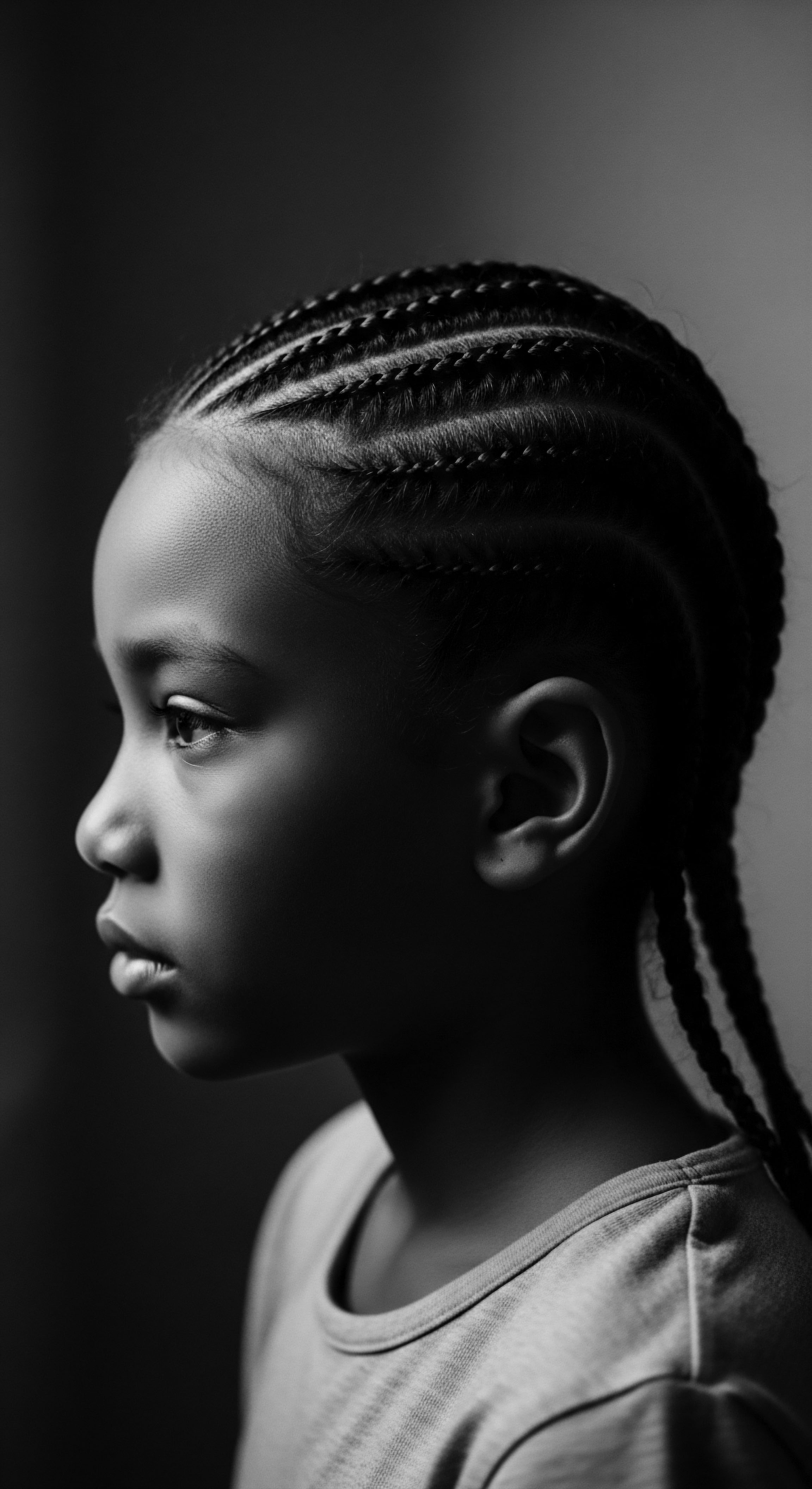
Roots
To stand at the threshold of textured hair’s legacy is to witness a profound journey, one that whispers through the generations, carried on the very strands that crown us. How did our forebears, those who walked the earth long before us, safeguard their intricate coifs and delicate coils as twilight descended? This inquiry is not merely about historical methods; it is an invitation to connect with the deep wisdom embedded in ancestral care, a testament to the ingenuity and reverence for hair that defined civilizations.
We seek not simple answers, but a recognition of the spirit that guided hands in ancient times, ensuring the longevity and vitality of hair, a sacred part of identity and expression. This understanding draws us closer to the living archive of our hair, a heritage that pulses with resilience and beauty.
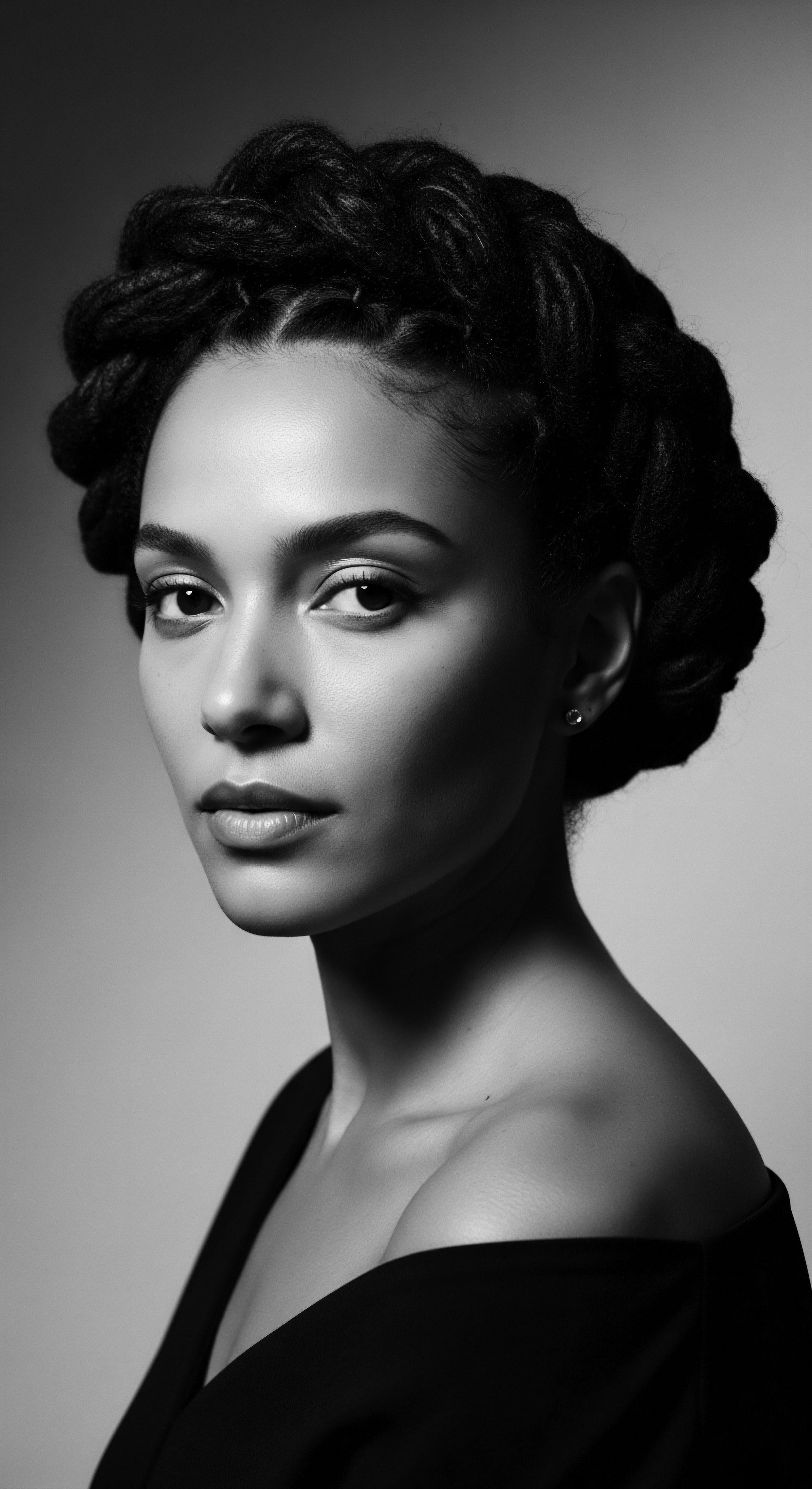
Hair’s Elemental Being and Ancient Preservation
The inherent architecture of textured hair, with its unique elliptical cross-section and varied curl patterns, renders it particularly susceptible to friction and moisture loss. Each twist and turn, while contributing to its magnificent volume and strength, also presents points of vulnerability. Ancient cultures, through keen observation and generational experience, recognized these fundamental truths. They understood that the daily dance of life, from arduous labor to ceremonial preparations, could tax the hair.
The challenge intensified as day gave way to night, a period when unconscious movement could undo hours of meticulous styling and care. The quest for nighttime protection, then, was not a mere convenience but a vital aspect of hair health and cultural preservation.
Across diverse lands, from the sun-drenched plains of Kemet to the vibrant communities of West Africa, solutions emerged. These were not uniform, but rather adaptations born from local flora, available textiles, and specific cultural practices. The solutions often mirrored the very rhythm of life, aligning with seasonal shifts and communal rituals.
The protective measures employed were often multi-layered, addressing both the physical integrity of the hair and its spiritual or social significance. They reveal a sophisticated understanding of hair’s needs, long before modern scientific classification systems came into being.
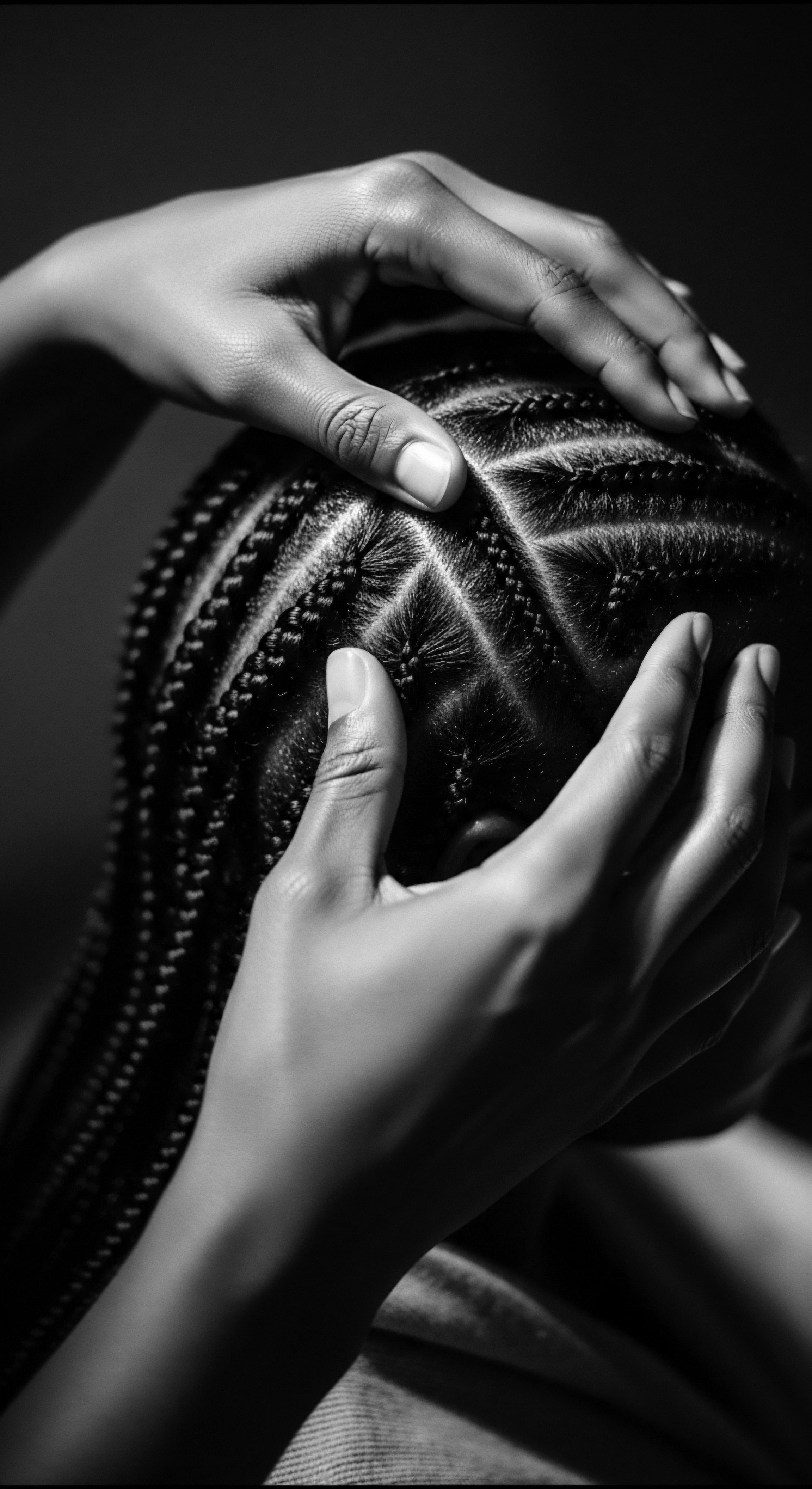
Anatomy’s Ancient Echoes
Consider the very fiber of textured hair. Its natural propensity to lift and coil creates a magnificent crown, yet this same characteristic means that each individual strand can rub against its neighbor, leading to tangling and breakage. When resting, especially on rough surfaces, these challenges are amplified. Ancient peoples, perhaps intuitively, perceived this.
Their practices, though not articulated in the lexicon of modern trichology, served to mitigate these issues. They understood the hair’s need for a smooth, low-friction environment during periods of rest. This insight shaped their choices of materials for head coverings and sleeping surfaces, prioritizing gentleness and moisture retention.
Ancient ingenuity, born from deep observation, sought to safeguard textured hair’s delicate structure from the nightly wear of rest.
The practices were often passed down through oral traditions, becoming interwoven with daily life and rites of passage. Children learned from elders, absorbing the rhythms of hair care as naturally as they learned to walk or speak. This intergenerational transfer of knowledge ensured that the wisdom of protection was not lost, but rather refined and adapted across epochs. It speaks to a collective understanding of hair not just as an adornment, but as a living legacy, a connection to the past and a beacon for the future.
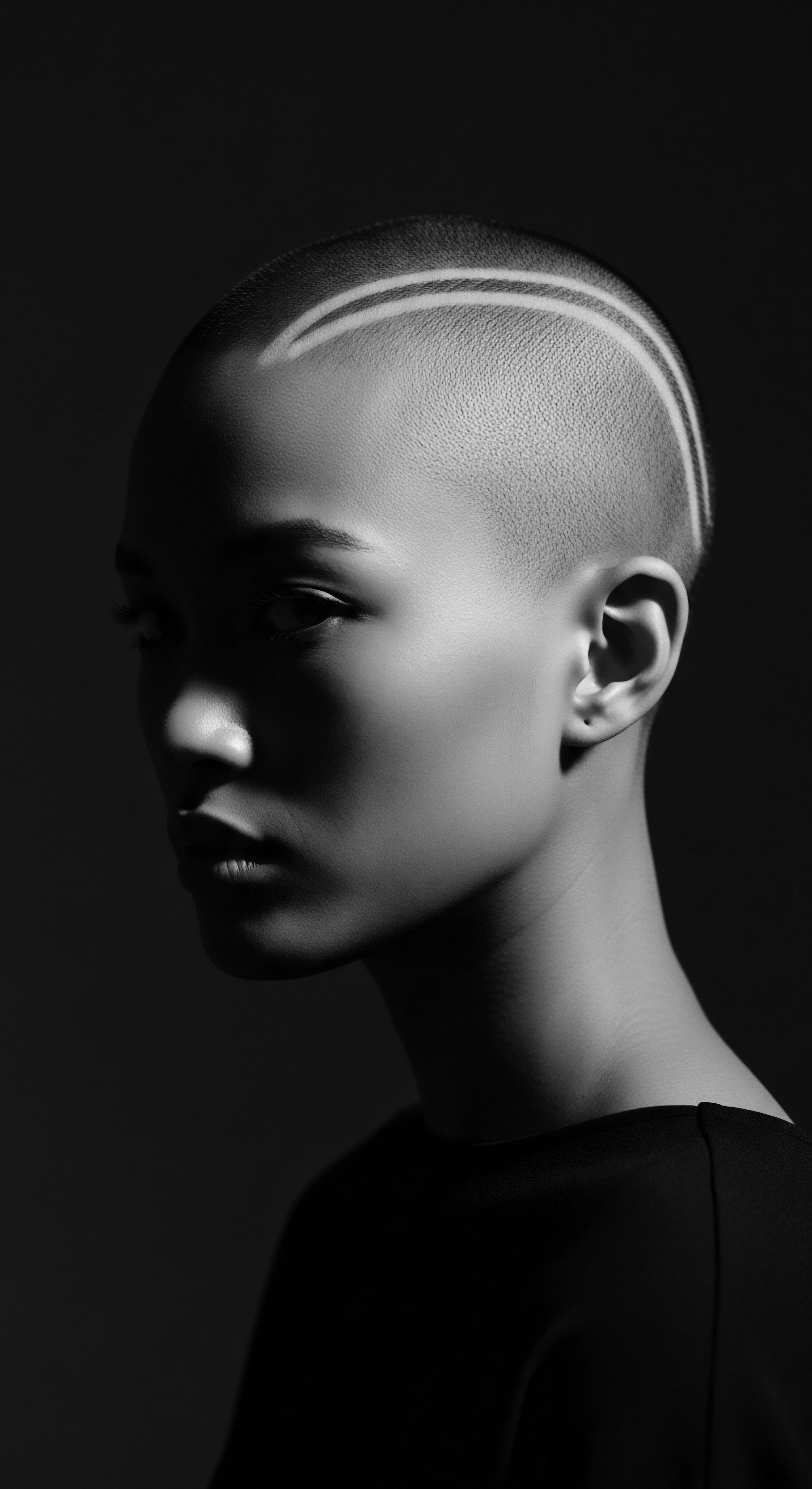
Ancient Egypt’s Headrests and Hair’s Dignity
A compelling historical example of ancient cultures safeguarding hair at night comes from the civilizations along the Nile. In ancient Egypt and Nubia, elaborate coiffures, often augmented with extensions and intricate braids, were symbols of status, identity, and spiritual connection. Preserving these styles was paramount. Rather than simply lying on soft pillows, which could crush and distort these carefully constructed looks, many Egyptians, particularly those of higher social standing, utilized headrests .
These specialized sleeping aids, typically crafted from wood, stone, or ivory, were curved supports designed to elevate the head and neck, allowing the hair to remain suspended and untouched by the sleeping surface. This prevented tangling, matting, and the disruption of elaborate styles (Fletcher, 2001). The meticulous preservation of hairstyles, evident even in mummified remains, points to the profound value placed on hair’s appearance and integrity, extending even into the quiet hours of sleep. This practice was a direct, physical manifestation of a cultural value that honored hair as a living, significant aspect of self and status.
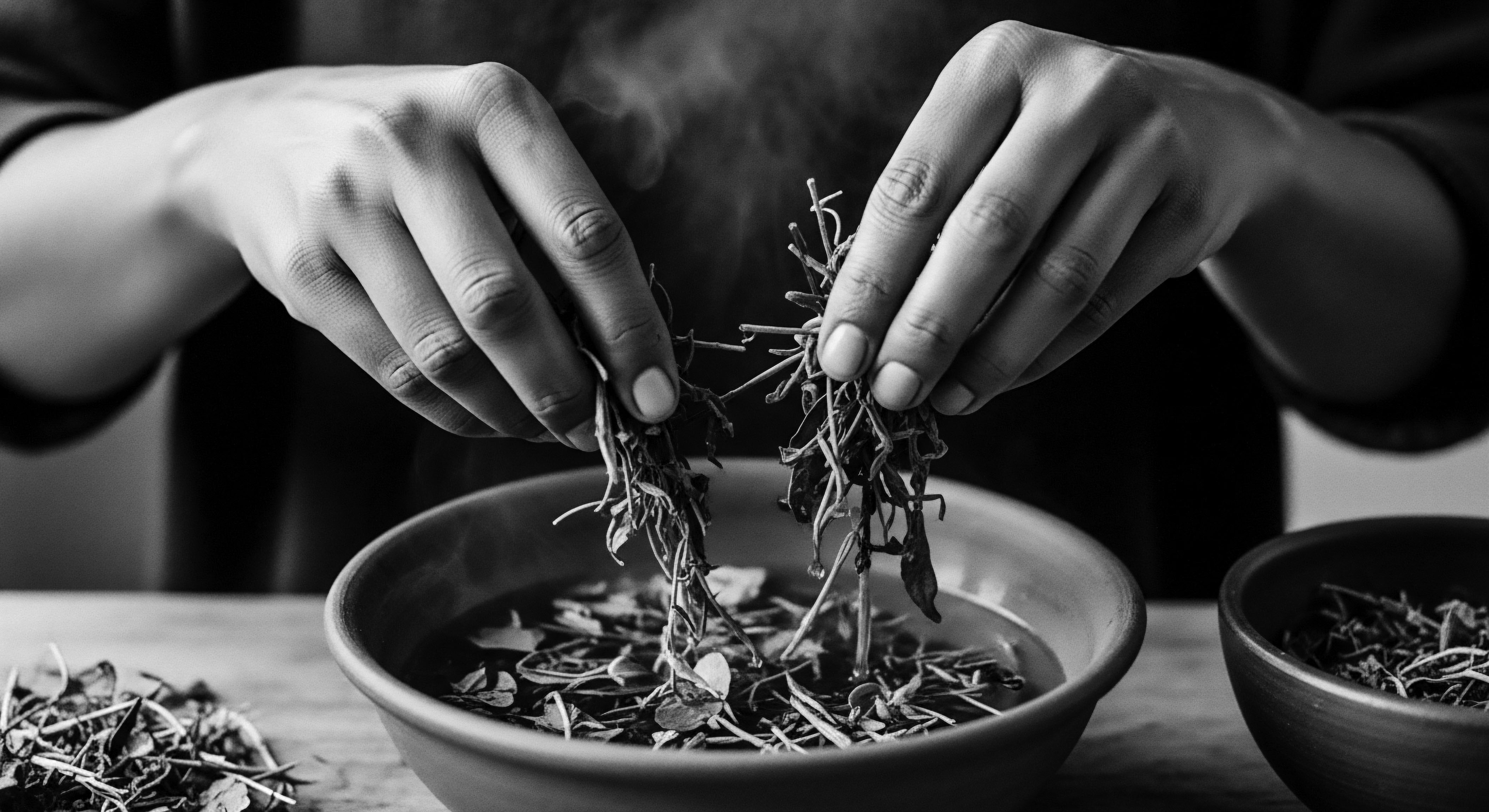
Ritual
As we move from the foundational understanding of hair’s nature, our thoughts naturally turn to the practical artistry, the tangible steps taken by those who came before us. How did ancient hands transform raw materials into guardians for the night? This journey into ancestral practice invites us to witness the unfolding of techniques and the selection of tools, each piece a whisper from a heritage of care. It is a space where the rhythm of human interaction with the natural world meets the specific needs of textured hair, culminating in practices that resonate with both purpose and reverence.
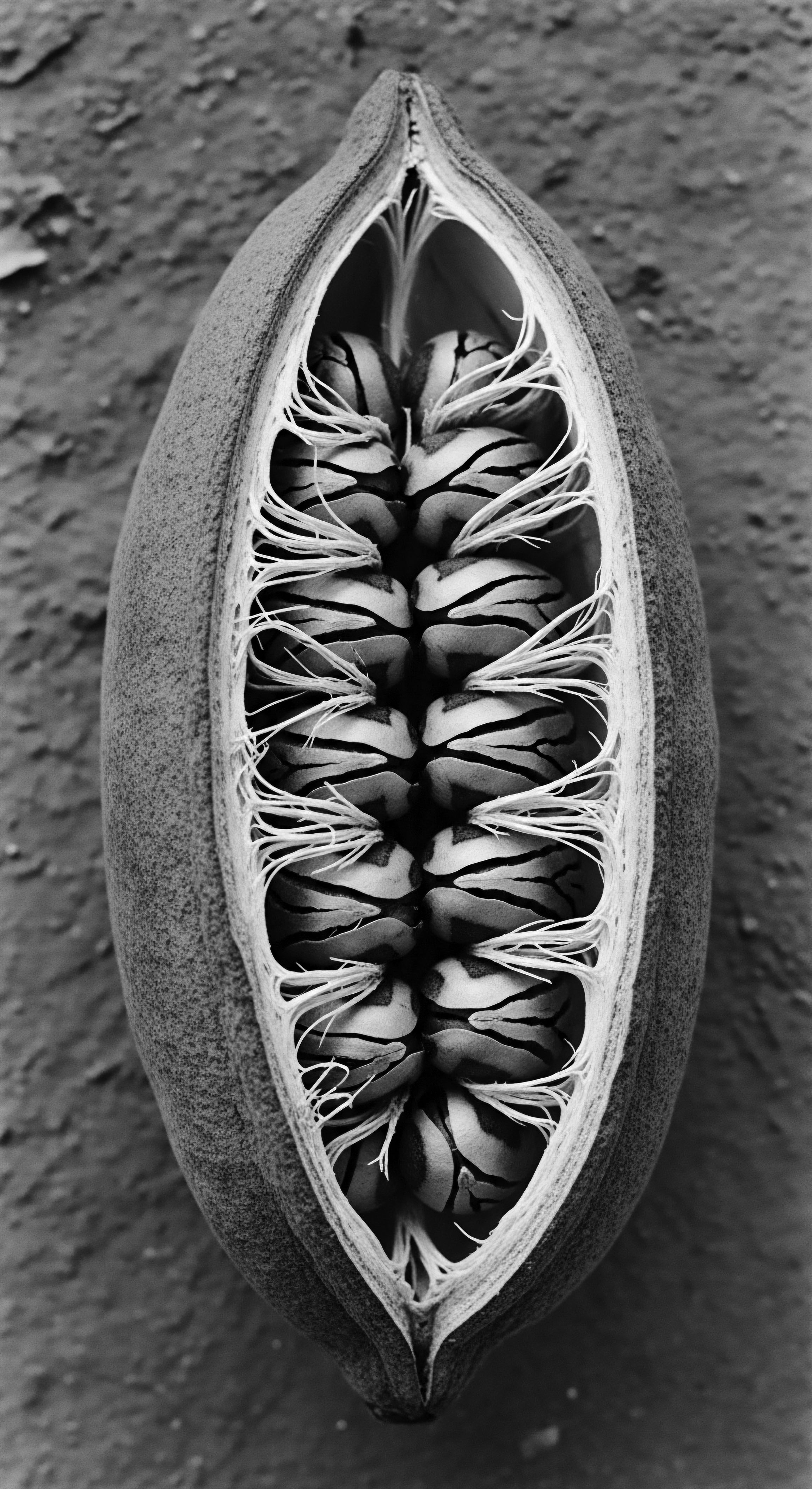
Protective Styling Through the Ages
The concept of protective styling, so vital to contemporary textured hair care, finds its genesis in the practices of antiquity. Ancient cultures understood that minimizing manipulation and securing hair in stable configurations were key to its longevity. These styles were not solely for aesthetic appeal during waking hours; they often served a dual purpose, acting as nocturnal shields against the ravages of friction and environmental elements.
Braids, twists, and various forms of locs were not merely fashion statements; they were ingenious solutions for maintaining hair’s integrity over extended periods, reducing breakage and promoting growth. The careful bundling of hair close to the scalp or within a secure casing ensured that individual strands were less exposed to the nightly dance of movement.
- Braids ❉ From the intricate cornrows seen in ancient African art to the robust plaits of various indigenous peoples, braiding was a universal language of hair protection. At night, these tightly woven structures kept hair contained, minimizing friction.
- Twists ❉ Similar to braids, two-strand twists or even larger sections twisted upon themselves provided a compact and secure way to manage hair, preventing tangles and preserving moisture.
- Locs ❉ In cultures where locs were customary, the very nature of these mature formations offered inherent protection. However, even locs benefited from wrapping or specific resting positions to maintain their form and cleanliness.
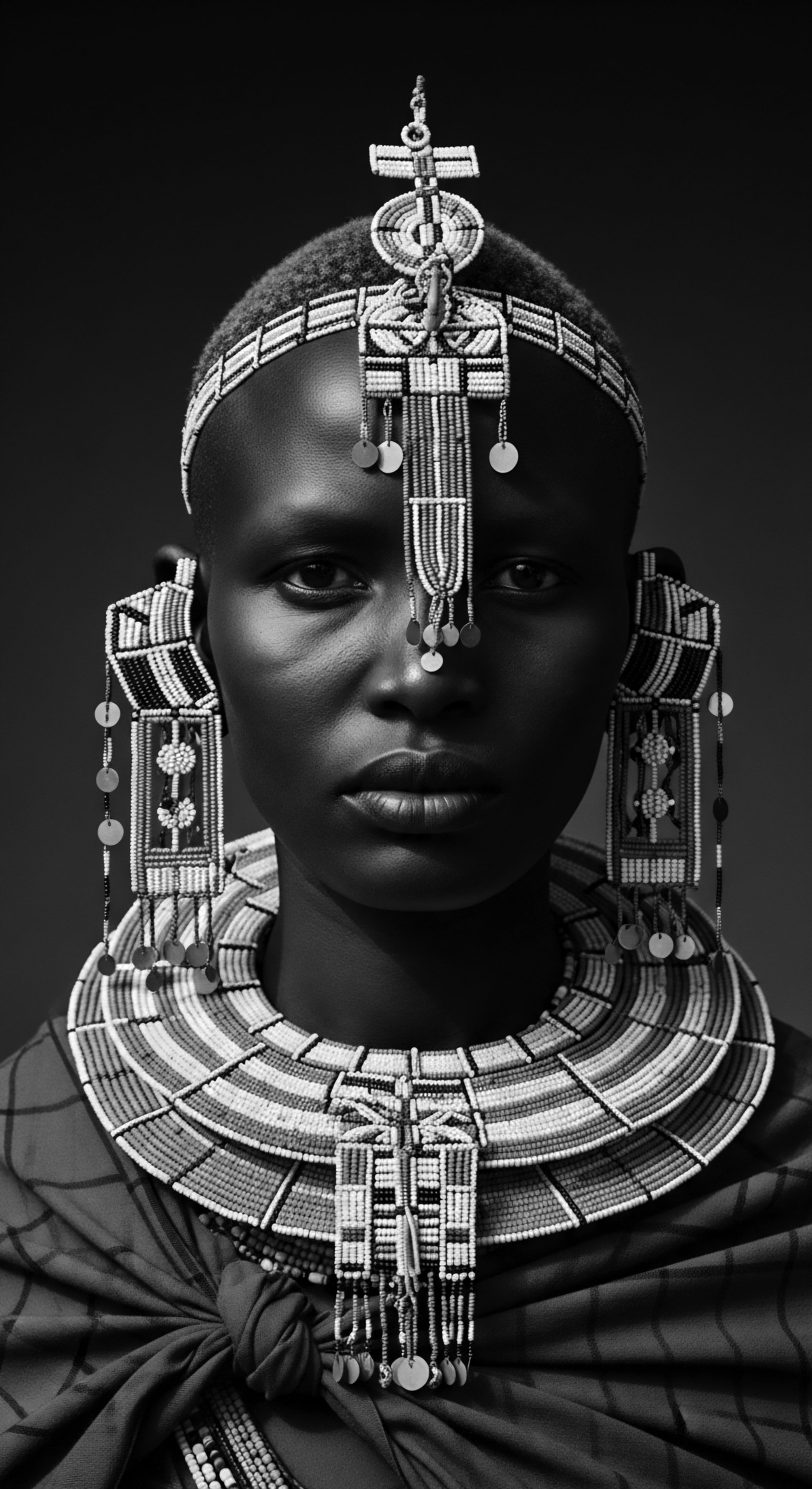
Nightly Adornments and Functional Coverings
The materials chosen for nighttime protection were often those readily available and culturally significant. Animal skins, plant fibers, and later, woven textiles, became the silent guardians of textured hair. The selection was rarely arbitrary; specific properties were sought. Smoothness, breathability, and the ability to retain hair’s natural oils were prized attributes.
These coverings were not always plain; often, they were imbued with cultural meaning, adorned with symbols, or crafted with a beauty that spoke to the reverence held for the hair beneath. The ritual of preparing hair for rest was a moment of intimate care, a private ceremony connecting the individual to a collective ancestral practice.
| Material Type Plant Fibers/Leaves |
| Ancient Examples Palm leaves, banana leaves, various woven grasses |
| Protective Function Provided a smooth, often cooling, surface; prevented direct contact with rough sleeping surfaces. |
| Material Type Animal Skins/Hides |
| Ancient Examples Softened leather, cured animal pelts |
| Protective Function Offered warmth and a barrier against harsh elements; sometimes used for structural support of elaborate styles. |
| Material Type Woven Textiles |
| Ancient Examples Linen, cotton, early silk-like fabrics |
| Protective Function Reduced friction, allowed hair to retain moisture, kept styles intact. |
| Material Type These diverse materials underscore a shared human impulse to safeguard hair, adapting local resources to a universal need for nighttime preservation. |
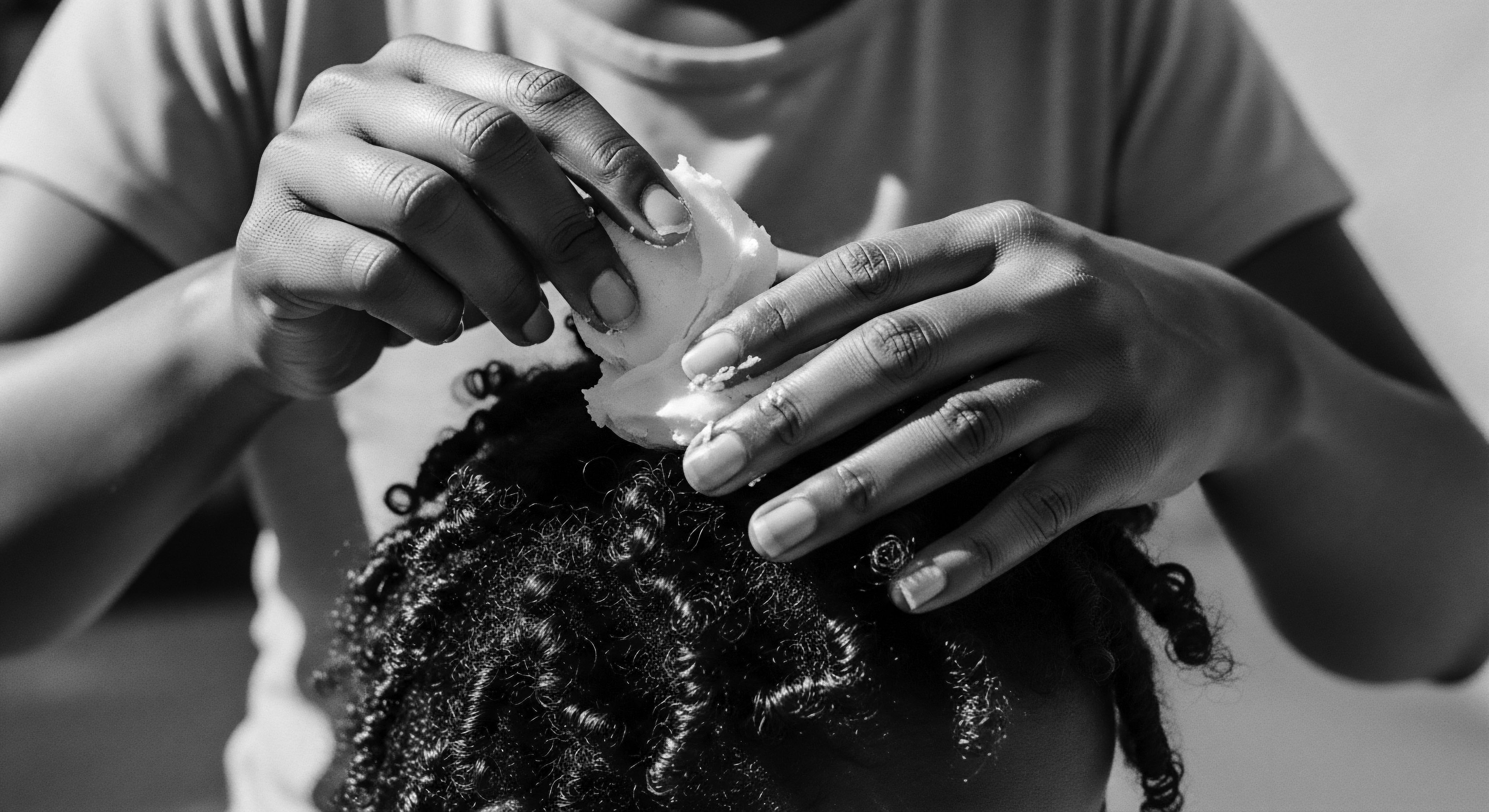
Did Ancient Hair Coverings Influence Modern Bonnet Design?
The modern bonnet, a staple in many textured hair care routines, carries echoes of these ancient practices. While its contemporary form is often a simple elasticized cap, its fundamental purpose—to create a low-friction environment and preserve hairstyles overnight—is deeply rooted in historical necessity. Consider the elaborate head wraps worn by women in various West African cultures, such as the Nigerian gele or the Ghanaian Duku. While primarily worn during the day as statements of identity and beauty, their underlying structure and the smooth textiles used (often cotton or silk) inherently offered protection.
It is plausible that the experience of sleeping with these or similar coverings, or the observation of how they shielded hair, contributed to the evolution of dedicated nighttime coverings. The continuity of this practice, from ancestral headwraps to the contemporary bonnet, illustrates a profound connection to hair heritage, a wisdom passed down through generations about the importance of protecting hair from environmental stressors, even during slumber.
The silent language of ancient head coverings and intricate coiffures speaks volumes about a heritage of care that transcended mere aesthetics.
The creation of tools, too, was a ritual in itself. Combs carved from wood or bone, pins fashioned from natural elements, and containers for oils and salves were not simply utilitarian objects. They were extensions of the hands that tended the hair, often bearing symbolic carvings or designs.
These tools facilitated the nightly ritual of preparing hair for rest, whether it involved sectioning, applying nourishing compounds, or securing a protective wrap. The act of using these ancestral tools, or their modern counterparts, creates a tangible link to a shared past, reinforcing the understanding that hair care is a continuum, a living tradition.
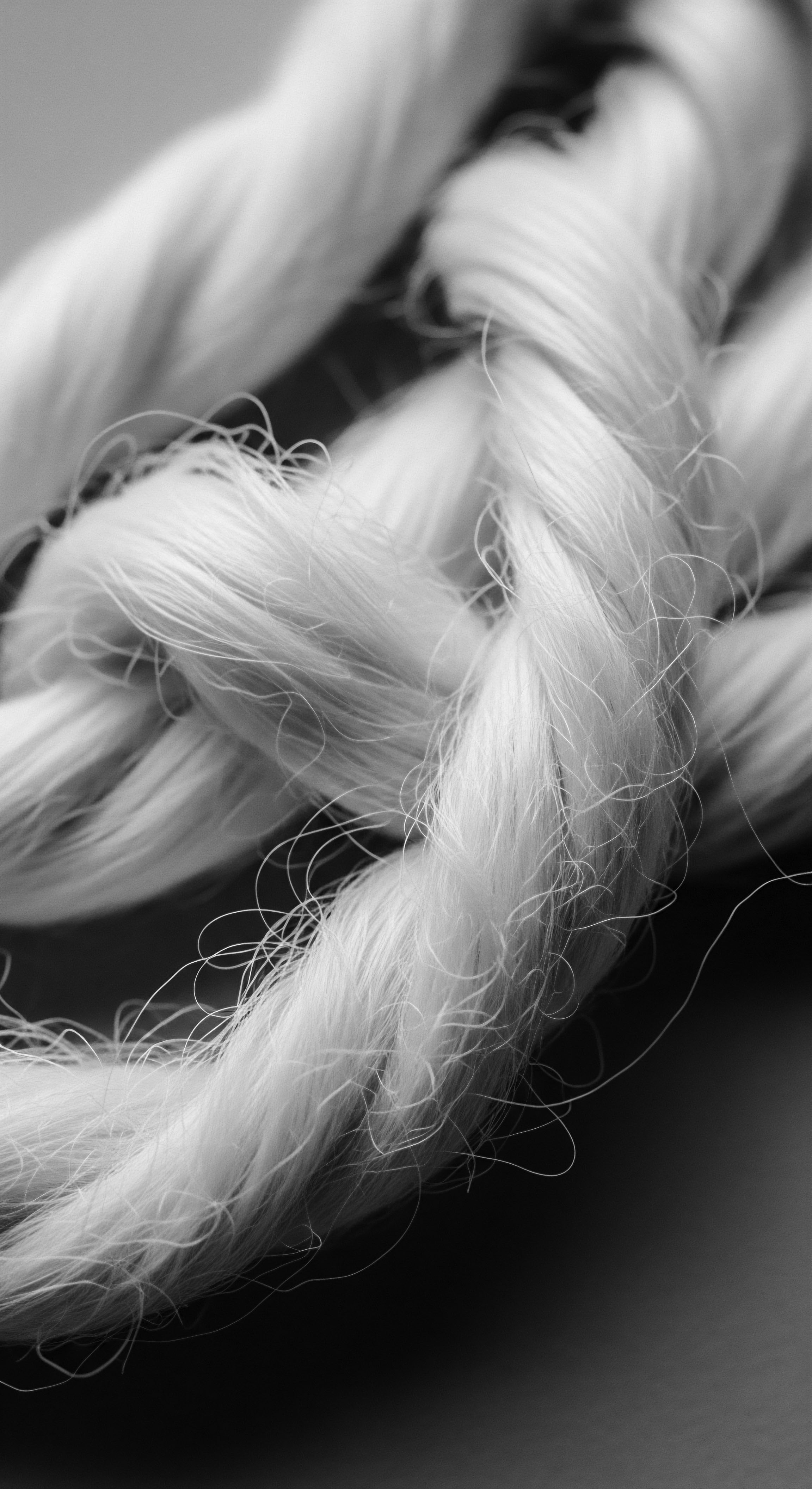
Relay
Stepping into this final chamber of exploration, we seek to understand the deeper currents, the interwoven threads of science, spirit, and societal understanding that underpinned how ancient cultures protected textured hair at night. This is where the wisdom of the past, often conveyed through practice rather than written treatise, finds its validation in contemporary understanding, and where the enduring legacy of hair care rituals continues to shape identity. We delve into the complexities, recognizing that these practices were never isolated acts, but components of a holistic approach to wellbeing, deeply rooted in a collective heritage.
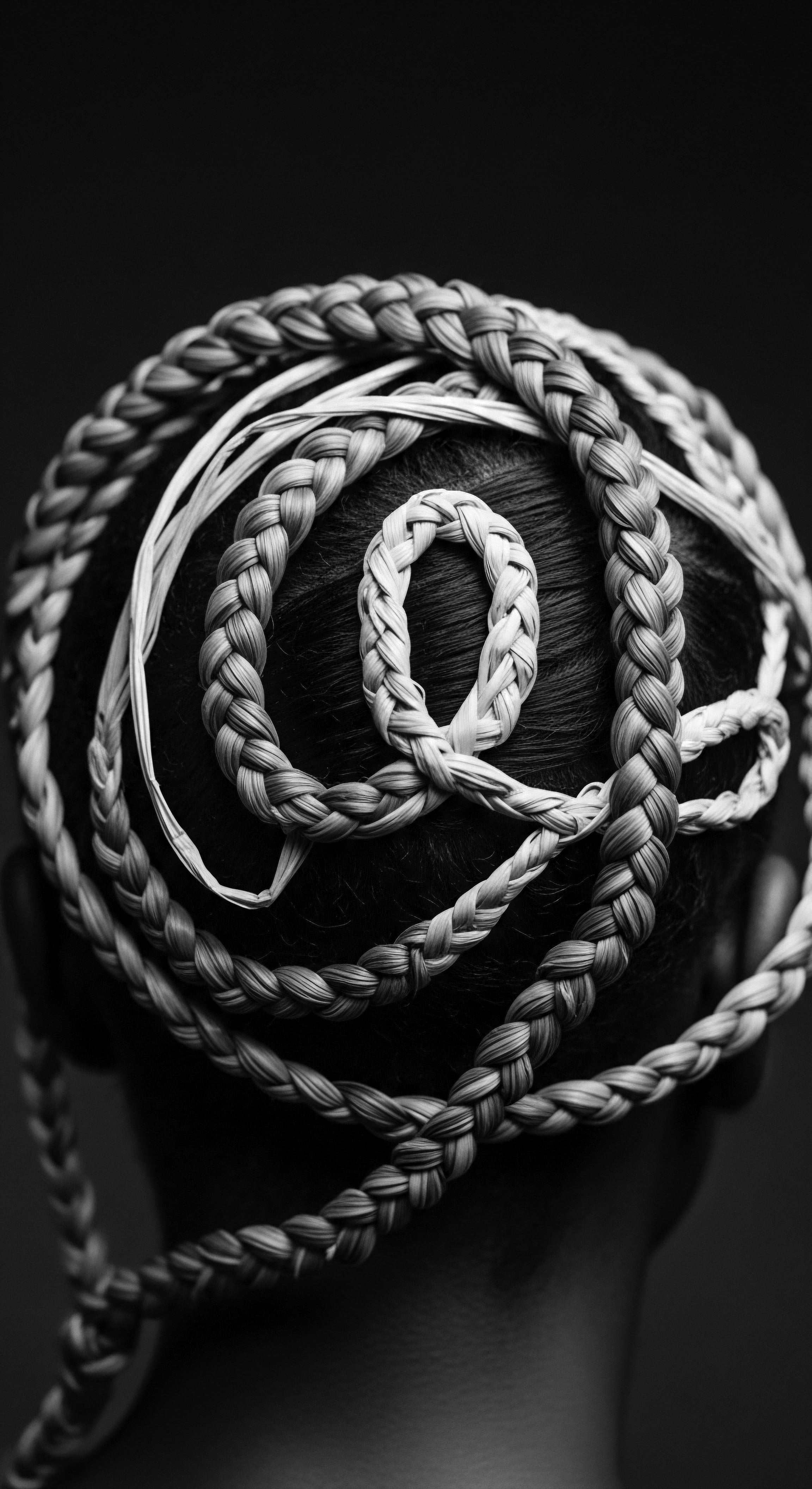
Holistic Approaches to Nighttime Hair Preservation
Ancient civilizations rarely compartmentalized health. Hair care was not separate from overall physical wellbeing, spiritual connection, or communal identity. The nightly rituals for hair protection were often integrated into broader practices of self-care and preparation for the next day’s responsibilities. This holistic perspective meant that the efficacy of nighttime hair protection was amplified by a general approach to hair health that included dietary choices, herbal treatments, and communal grooming.
The choice of oils, for instance, used to lubricate and seal the hair before wrapping, was often informed by their medicinal properties and their availability within the local ecosystem. These were not just cosmetic applications; they were seen as vital nourishment for the hair, protecting it from dryness and brittleness, which would otherwise compromise its integrity during sleep.
Consider the use of plant-derived oils and butters . In many West African societies, shea butter (from the Vitellaria paradoxa tree) and various palm oils were central to hair and skin care. These substances, rich in fatty acids and vitamins, would have been applied to hair before protective styling or wrapping for the night. This provided a lipid barrier, minimizing moisture loss and reducing friction between strands and external surfaces.
The very act of application was a tactile connection to the earth’s bounty, a practice that affirmed the body’s natural processes. The knowledge of which plants yielded the most beneficial extracts was a form of ancestral science, passed down through generations of practitioners.
- Shea Butter ❉ Extracted from the nuts of the shea tree, its emollient properties provided a protective coating, sealing moisture into the hair shaft and reducing friction.
- Palm Oil ❉ A versatile oil, used in various forms, offering conditioning and a barrier against environmental stressors during sleep.
- Castor Oil ❉ Known for its thick consistency, this oil, derived from the castor bean, could have been used to coat strands, providing substantial protection against breakage.
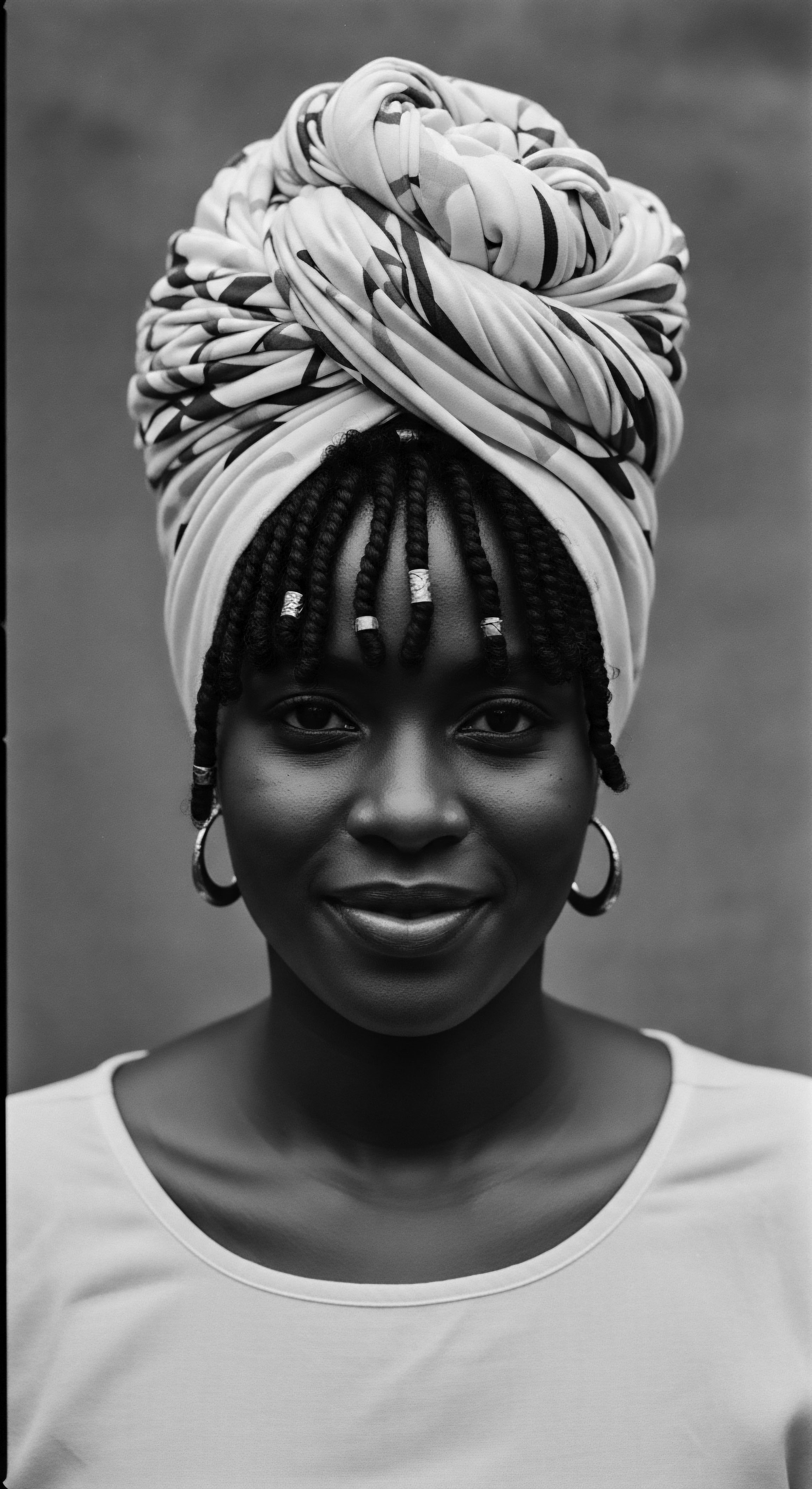
Why Were Elaborate Styles Protected So Diligently?
The dedication to protecting hair at night, especially elaborate styles, speaks to a deeper cultural and psychological significance. Hair was often a living canvas for social status, age, marital status, spiritual beliefs, and tribal affiliation. A disheveled or damaged coiffure could convey disrespect or misfortune. Thus, maintaining the integrity of one’s hairstyle was not a matter of vanity but of upholding social order and personal dignity.
The nightly ritual of safeguarding hair became an act of self-preservation, a silent declaration of one’s place within the community and connection to heritage. The care taken before sleep was a continuation of the day’s performance of identity.
Moreover, the process of styling hair was often communal, a time for storytelling, bonding, and the transmission of cultural knowledge. The effort invested in creating these styles meant that their preservation was economically sensible, as well as culturally imperative. It was a recognition of the labor and artistry involved.
The nightly protection, therefore, was a pragmatic choice born from deep cultural value. It ensured that the artistic expression, the hours of communal effort, and the personal statement made through hair would endure beyond the waking hours.
The ancestral wisdom concerning textured hair’s nightly care provides a profound mirror for contemporary practices. The modern satin or silk bonnet, a seemingly simple accessory, stands as a direct descendant of these ancient principles. Its smooth surface replicates the low-friction environment sought by those who slept on carved headrests or wrapped their hair in fine linens. The application of nourishing oils before bed echoes the use of shea butter and other plant extracts.
These are not coincidences; they are the enduring echoes of a wisdom that recognized the intrinsic needs of textured hair, a wisdom passed down through a heritage of resilience and thoughtful care. The continuity of these practices reminds us that while tools and materials may change, the fundamental respect for our hair’s nature remains a timeless truth.
The continuity of protective hair rituals, from ancient headrests to modern bonnets, underscores an enduring ancestral wisdom concerning textured hair’s nocturnal needs.
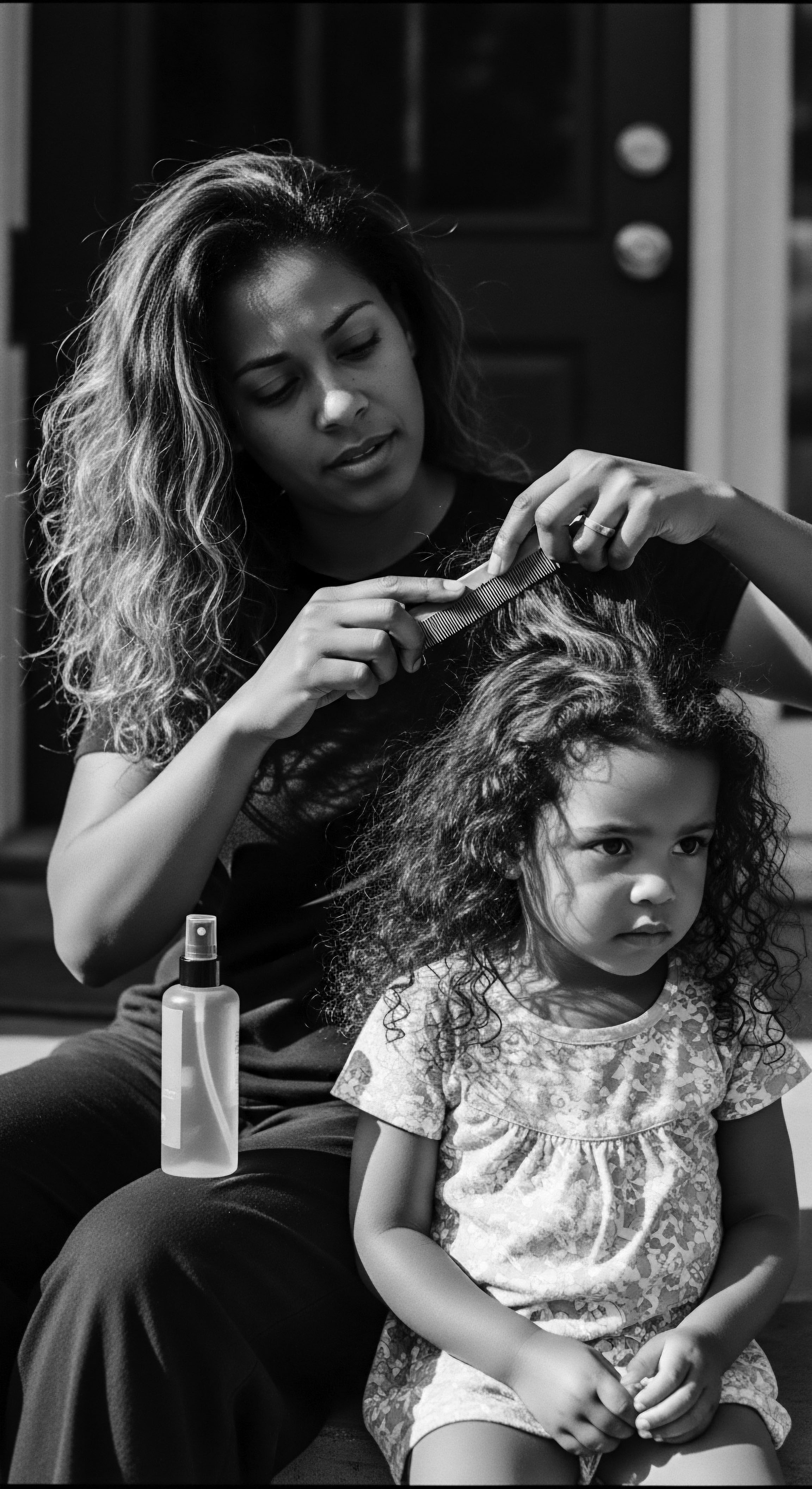
Reflection
As our exploration draws to a close, we stand in quiet contemplation of the rich legacy that textured hair carries. The ways in which ancient cultures protected their hair at night are more than historical footnotes; they are living narratives, breathing archives of human ingenuity, cultural value, and an unwavering respect for the self. Each wrap, each carefully placed headrest, each application of nourishing oil speaks to a profound connection to the strands that have always been more than just protein fibers. They are conduits of memory, vessels of identity, and symbols of resilience.
The journey through these ancestral practices reminds us that the care of textured hair is not a modern invention but a timeless tradition. It is a heritage that has been passed down through the quiet moments of nightly preparation, through the wisdom shared between generations, and through the enduring spirit of those who understood that true beauty resides in vitality and reverence. To understand how ancient cultures protected their hair is to step into a continuum of care, to feel the gentle guiding hand of our ancestors, and to recognize the ‘Soul of a Strand’ within ourselves, a luminous thread connecting past, present, and future.
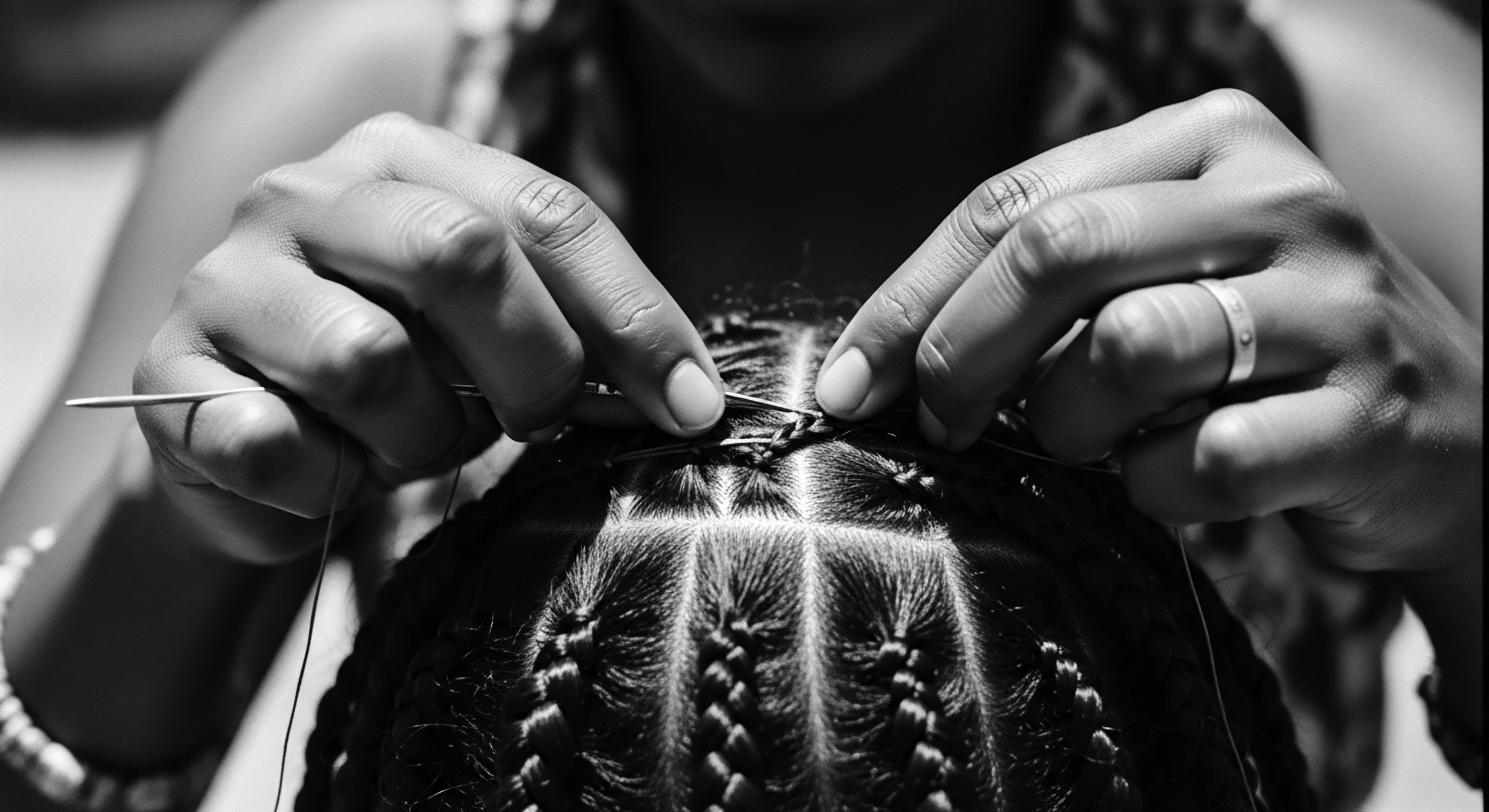
References
- Fletcher, J. (2001). Ancient Egyptian Hair ❉ A Study of the Evidence from the Dynastic Period. Manchester University Press.
- Opoku, A. A. (1978). West African Traditional Religion. FEP International Private Limited.
- Wild, R. (1998). The Story of Hair. Dover Publications.
- Ross, D. (1998). Culture and Customs of Ghana. Greenwood Press.
- Spring, C. & Hudson, J. (1995). African Textiles. Harry N. Abrams, Inc.
